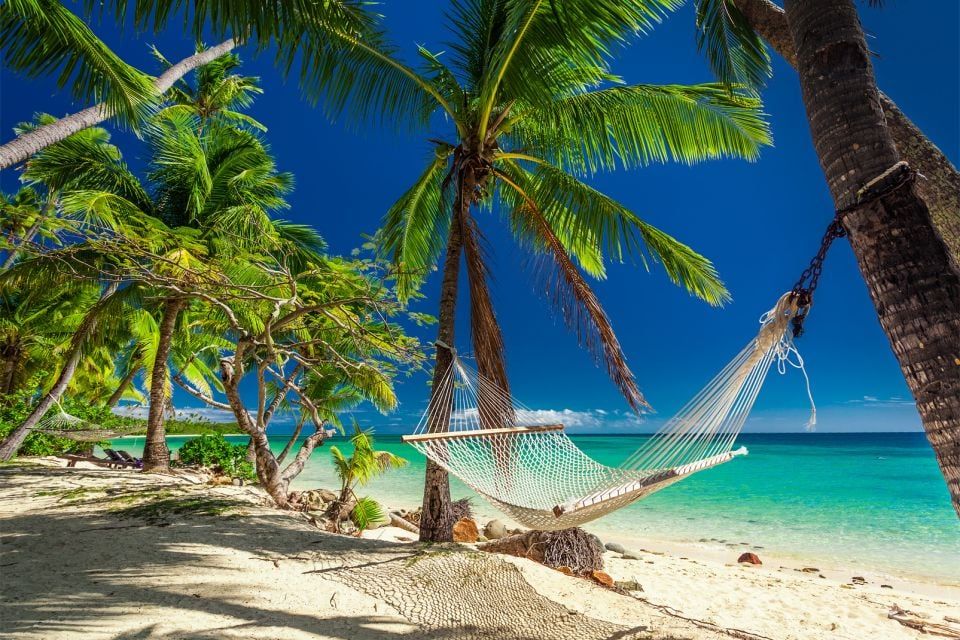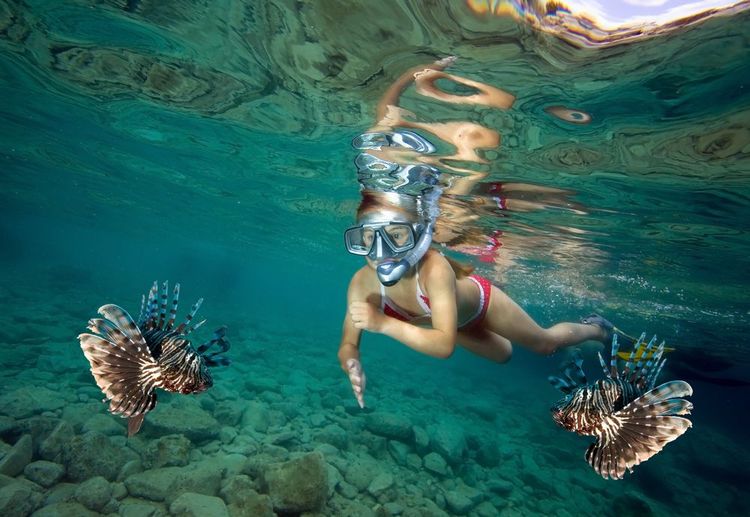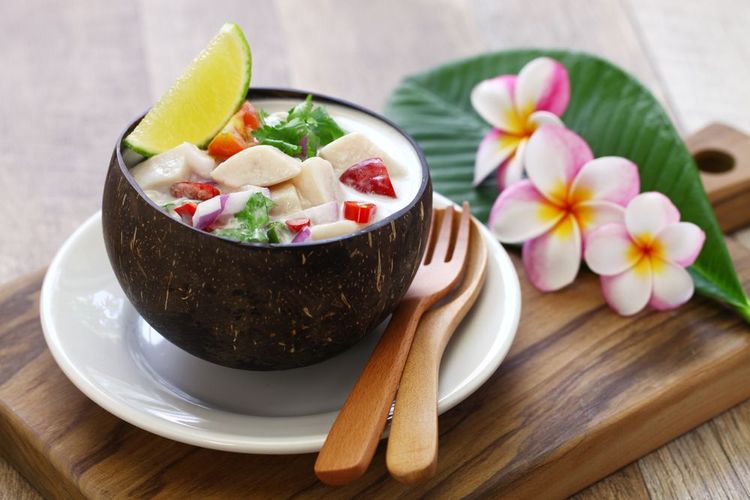In the south-west Pacific, the Fiji archipelago is little explored by the French. And yet... with more than 300 paradise islands to choose from, it's pretty tempting!

Fiji, much more than just an archipelago
Make no mistake about it. Fiji may be an archipelago of over 300 islands in the Pacific Ocean, but it's a far cry from the tiny atolls scattered across thousands of square kilometres of ocean, such as the Cook Islands. Fiji's volcanic island of Viti Levu is ten times the size of Martinique! And its neighbour Vanua Levu is five times bigger. Fijians have land. And beautiful land. But of the 322 islands - the official count - only a hundred or so are inhabited by a richly mixed population. Polynesians, Micronesians, Melanesians, Europeans and Chinese make up the Fijian people. The other islands are little more than paradise atolls. Uninteresting, isn't it?

View of Kuata Island from Vatuvula volcano on Wayaseva Island, Yasawa Islands, Fiji.
- © Don Mammoser / ShutterstockTop tourist destination for rugby and diving fans
Fiji's worldwide reputation has been built on two sports: rugby and diving. The former has put Fiji on the map for the majority of Europeans, while the latter attracts travellers from all over the world for the quality and diversity of its sites. To find the best beaches in Fiji, head for the Mamanuca and Yasawa islands, two archipelagos located to the west and north-west of Viti Levu. There are other postcard-worthy islands and atolls in Fiji, notably in the east, in Lau province (around Tubou), but these are much more difficult to access. For diving, both experienced enthusiasts and snorkelling beginners should head for the Great Astrolabe Reef. In the south of the country, at the north-eastern tip of Kadavu province, this coral reef, which surrounds the islands of Dravuni, Yaukuvelevu and Bulia, offers water of unrivalled clarity. The beaches are also sublime!

For fans of outdoor sports and breathtaking scenery
But as we said, Fiji is also a land of volcanoes. Hikers and wildlife enthusiasts will have no trouble enjoying themselves here. There are many marked trails through the jungle of the main islands, and even a half-day walk to a waterfall or viewpoint offers superb scenery.

Waterfall, Fiji, Viti Levu Island, Colo-I-Suva Forest Park, Fiji
- © Martin Prochazkacz / ShutterstockFor a real trek between jungle and lagoon, the tour of the island of Viti Levu is the best option. This is an opportunity to discover the interior and the highlands of the island, known as the Nausori Highlands, and to take part in a wide range of outdoor activities such as canyoning, climbing, rafting, white-water kayaking... you can do it all in Fiji! Those who stray a little from the beaches and lagoons will realise that this is just one aspect of this archipelago, whose richness is also cultural. The first thing to discover is the world of Kava, which is a drink, a custom and an excuse to share a moment of conviviality that is part of Fijian daily life.
Fiji: what to eat
Fijian cuisine consists mainly of local and Indian dishes. Fish and seafood are essential elements, but chicken and pork are also readily available. Fish and white meats are the counterpart to 'root crops', the generic name used by Fijians to refer to the tubers that are eaten a great deal. These are generally taro or dalo, a tuber known as dachine in the West Indies, or manioc, most often in the form of tapioca.

Kokoda, ceviche con leche de coco, cocina fiyiana
- © bonchan / ShutterstockSpecialities include kokoda (fish with coconut milk and lime), rourou (a taro-based dish), kassaua (baked tapioca au gratin with coconut juice, cane sugar and banana porridge) and duruka (a type of local asparagus), as well as a host of Indian curries, Western dishes and, of course, a whole host of exotic and succulent fruits.
Fiji: what are the cultural particularities?
Although the majority of Fijians are Christians, the religion shared by all the country's inhabitants is rugby. The French, nationals of a country whose national team is worthy of respect, are very well regarded in Fiji. In any case, Fijians are extremely welcoming and cultivate a serenity at all times that is astonishing and enviable. Fiji is not the country of punctuality. Known as 'Fijian time', Fijian time is a blurred, random space-time based on a fairly simple principle: I'll be there when I'm there, and it'll happen when it happens. Or it won't. Fijians still produce high-quality traditional handicrafts, in particular pottery and a traditional fabric, tapa, made from woven inner mulberry bark. Similarly, ritual dances (mekes), accompanied by stories passed down through ancient oral traditions, are still widely practised. Fiji is home to a large Indian community, who traditionally work in the sugar cane fields.
How to get there?
Nadi International Airport on the west coast of Viti Levu is the gateway to Fiji. But there are plenty of domestic flights to reach the smaller islands scattered around by regional jet. The main local airports are Nausori (near Suva, the capital, on Viti Levu), Labasa and Savusavu (on Vanua Levu), Taveuni, Vanua Bavalu, Cici, Labeka, Koro, Gau, Moala and Kadavu.
Where to stay?
For a long time, Fiji had the reputation of being an expensive destination, reserved for a privileged few. Today, things have changed somewhat, mainly thanks to lower air fares. Fiji is a major tourist destination. The archipelago has the advantage of offering a wide range of accommodation and services for travellers. It all depends, too, on how you live there. If you adopt the local style, staying in small guesthouses, eating in gargotes and market stalls, and using public buses and boats, your daily budget may well not exceed 30 euros. On the other hand, if you're looking for the grand Hollywood game of exoticism under coconut palms, azure cocktails by the pool of a luxurious hotel, drowned in tropical vegetation and bordered by a private lagoon, lobsters and champagne served by a butler in livery, a yacht chartered to go diving on an atoll, the budget is likely to explode very quickly...
Practical information
Surface area: 7056.0 km2
Population: 849,000
Time difference: +11 h winter/+10 h summer
The official currency is the Fijian dollar (FJD). You can change money at the airport or in local banks, and most hotels and restaurants accept international credit cards.
Fiji has a tropical climate with warm, humid temperatures all year round. The best time to visit is from May to October, when temperatures are cooler and there is less rain.
Once again, Fiji's sublime beaches and lagoons really shouldn't be summed up. The archipelago is a vast and varied destination that lends itself perfectly to a true itinerant voyage of discovery of nature and culture. Travel by car, bus, boat or plane!
explore Try out our comparators
It is Easy to travel



